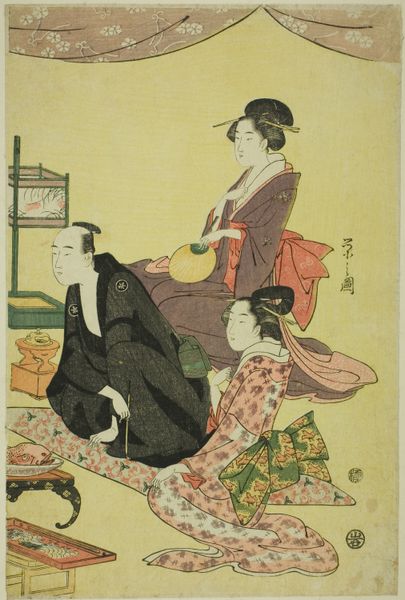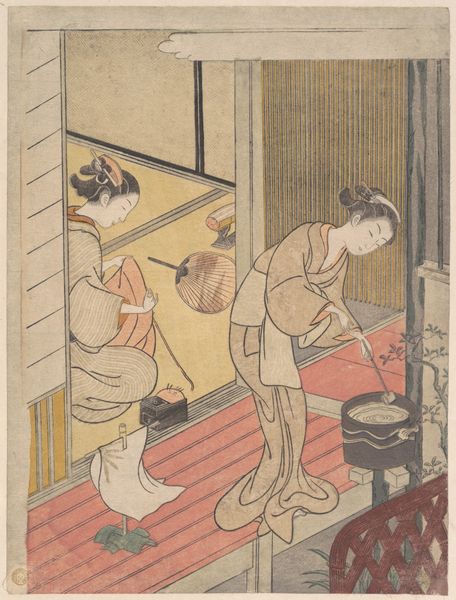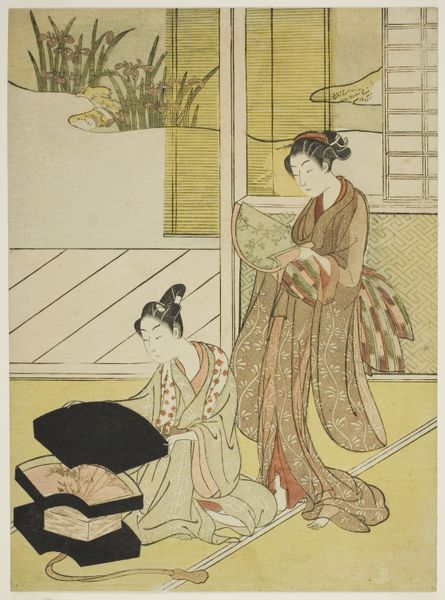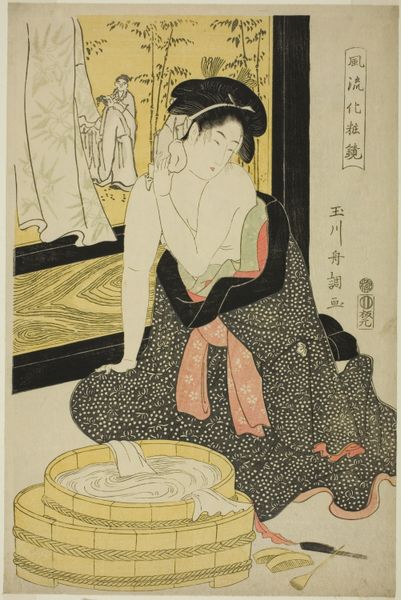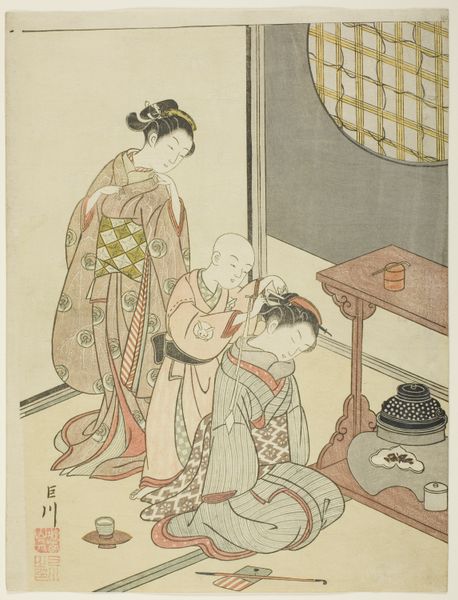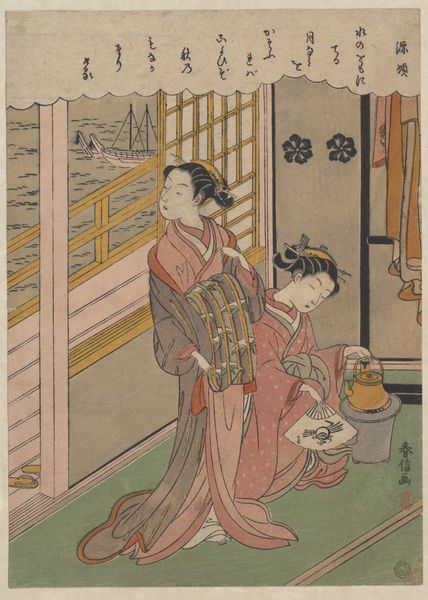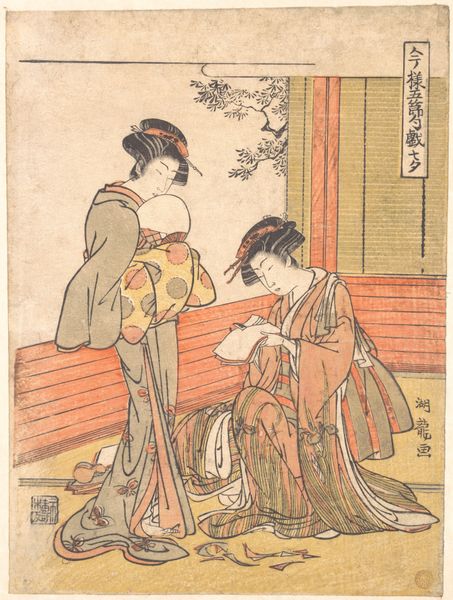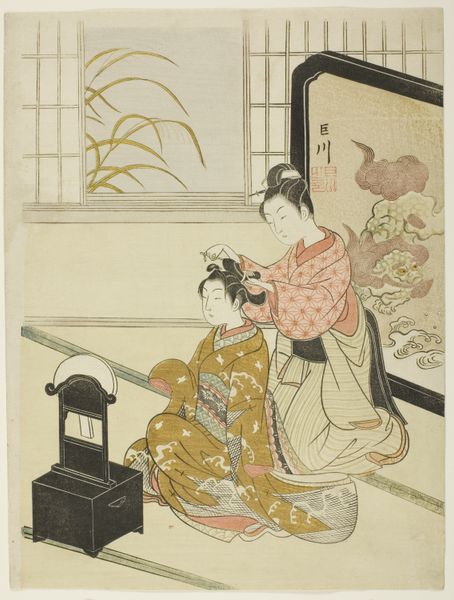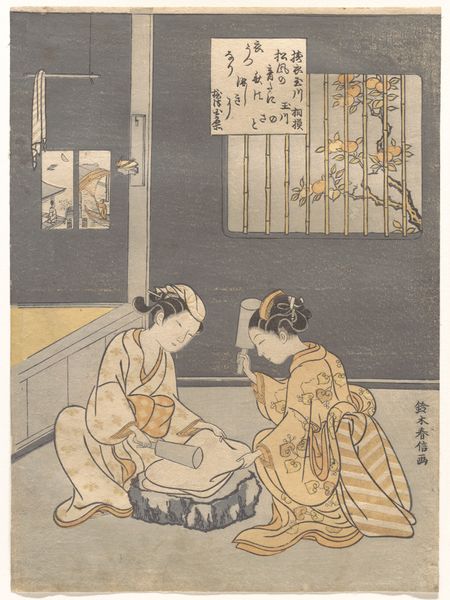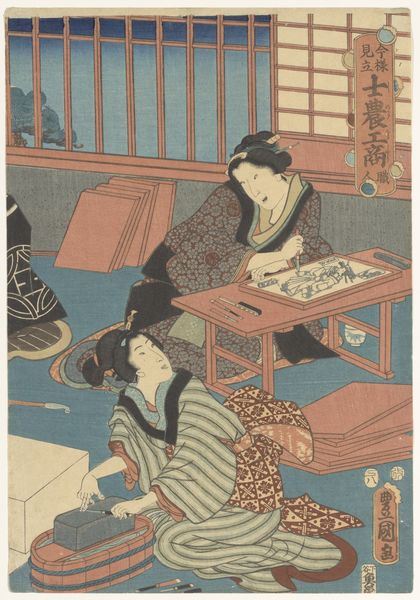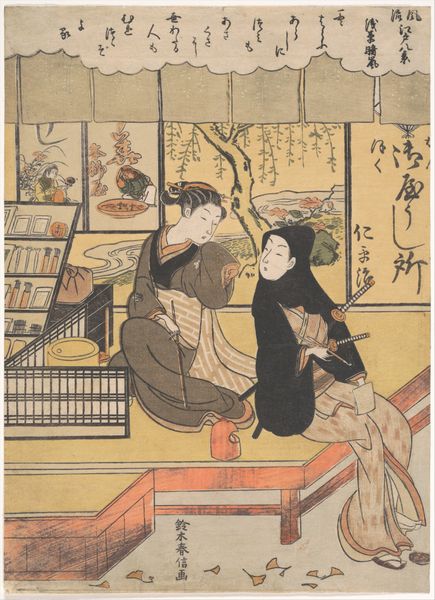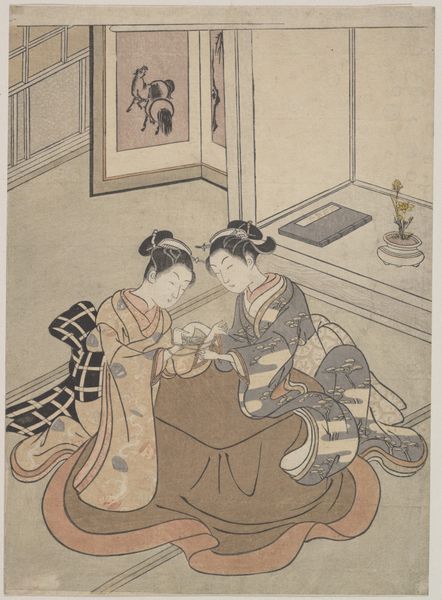
Perfuming a Robe as Visual Parody of the Four Accomplishments Possibly 1767
0:00
0:00
print, ink
#
portrait
# print
#
asian-art
#
caricature
#
ukiyo-e
#
japan
#
ink
#
genre-painting
Dimensions: 11 × 8 1/4 in. (27.9 × 20.9 cm) (image, sheet, vertical chūban)
Copyright: Public Domain
Curator: Harunobu, around 1767, created this print, “Perfuming a Robe as Visual Parody of the Four Accomplishments.” It’s held at the Minneapolis Institute of Art. It's quite a mouthful of a title, isn't it? Editor: It is, but I'm immediately struck by the serene, almost domestic scene. Two women are indoors; one seems to be attending to a robe while the other is lost in her own world. It’s visually quiet, yet something about it feels subversive. Curator: Precisely! Harunobu's known for embedding playful social commentary within these elegant prints. What appears as everyday is far from it. The Four Accomplishments – skill in lute, Go, calligraphy and painting – represented the height of cultivation for educated women, which the artist is challenging by representing a completely different, almost opposite scenario of ordinary women and ordinary pastimes. Editor: Yes, the parody is rich. Perfuming a robe becomes a replacement for refined artistic skill. But also, think about who had access to "the four accomplishments". This work throws the concept of value itself into question – where does societal worth really reside? What's being satirized in these representations of the women in ukiyo-e: is it about gender, class or just a playfulness to entertain viewers of that time? Curator: Both, I think. There’s a winking acknowledgment of societal norms, or better yet, a quiet nudge. It plays with the idealized representations of women common in art at the time, contrasting that with the lived realities of women's domestic roles, especially the material labor involved. And what are your thoughts on the almost careless treatment of the goban on the background in contrast with their focused attention on the yellow checkered robe? It really creates a complex perspective on what defines high or low, important and not important activities, right? Editor: Absolutely. And this juxtaposition is so poignant, prompting us to reflect on the subtle ways social structures dictate not just our actions but how we even perceive our own worth, whether now or during the Edo period in Japan. In the grand scheme of things, aren’t all accomplishments just ways to “perfume our robes,” metaphorically speaking? Curator: That’s a beautiful way to put it. In the end, perhaps it’s a call to re-evaluate what truly matters and question the status quo, presented with gentle, pleasing harmony, something only Harunobu knew how to do best! Editor: Exactly. Leaving us to question the things that persist in our world as worthy and what gets labeled otherwise... what gets remembered as culture. It's art that refuses to stay quiet.
Comments
No comments
Be the first to comment and join the conversation on the ultimate creative platform.
